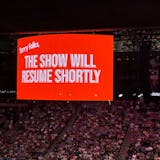The Third Precinct's charred remains sit vacant on a south Minneapolis street corner, encircled by barricades, tall fences and razor wire. Debris litters the rooftop and paint splatter drips down giant concrete blocks obstructing the front entrance.
It serves as a painful reminder of the civil unrest sparked by the murder of George Floyd by a white police officer. And it persists as a political talking point by those who have denounced the building as a "monument to anarchy" or an enduring symbol of police brutality.
Even as wide swaths of Lake Street have emerged from the ashes to rebuild storefronts destroyed during the riots of May 2020, the precinct stands halted in time. The boarded-up hulk baffles neighbors, who have grown increasingly exasperated with city leaders' inaction. Now, nearly three years later, residents are being asked to decide: renovate the existing structure for an estimated $12 million or construct a new headquarters four blocks away at a city-owned lot for roughly twice the price.
Hundreds attended a series of listening sessions earlier this month to weigh in on the proposal, which many criticized as a "false choice." Some expressed anxiety about the inability to quell a surge in violent crime, while a majority who spoke were aghast at the prospect of returning officers to a site notorious for its history of renegade cops.
"We don't dispute that our community requires policing. We just can't have it next to us," said Chris Mozena, executive director of the Hook & Ladder Theater, a renovated firehouse that abuts the defunct precinct.
"Until that site is bulldozed, you don't have an opportunity to begin healing and talking about what kind of future we can have together as a community. Anything else is just insulting."
Two options presented
Residents packed inside the performing arts center last week, eager to hear long-awaited plans for what's become a neighborhood eyesore. They filtered past colorful architectural renderings — one depicting a rehabbed version of the original precinct, with a garden leading toward its main entry; the other, a five-story new headquarters overlooking Minnehaha Avenue atop a glass-walled atrium.



